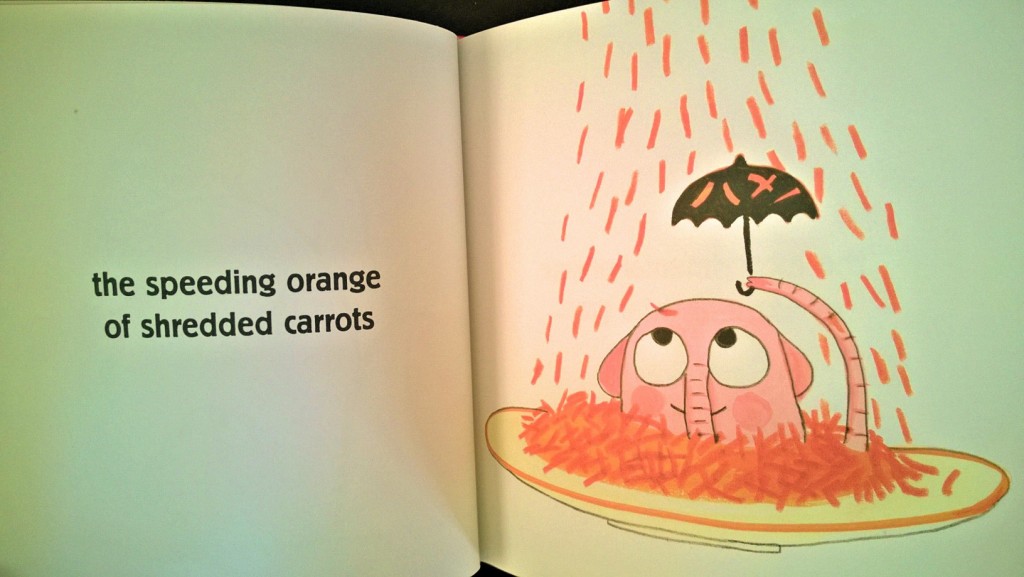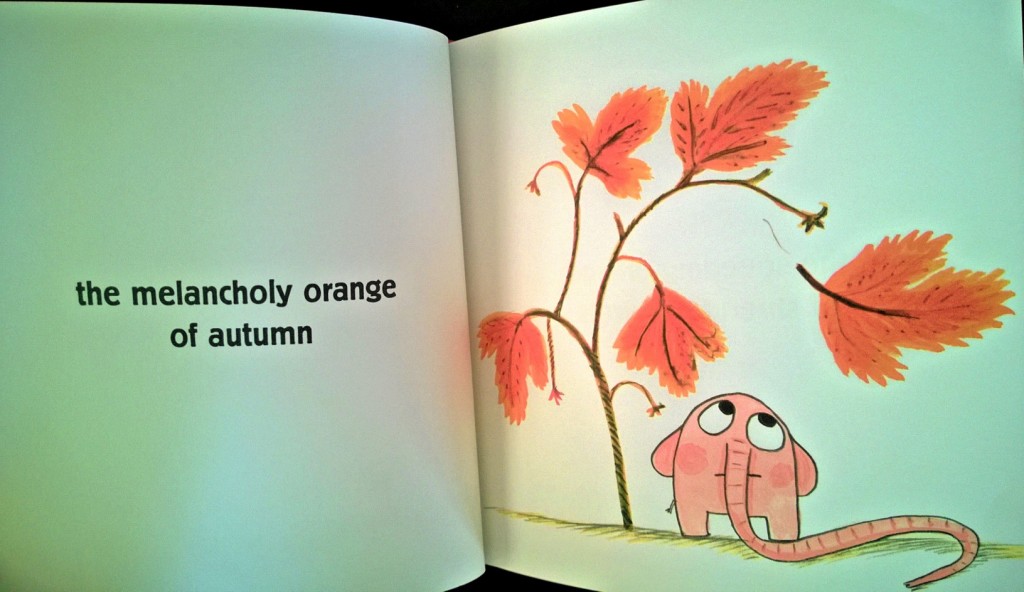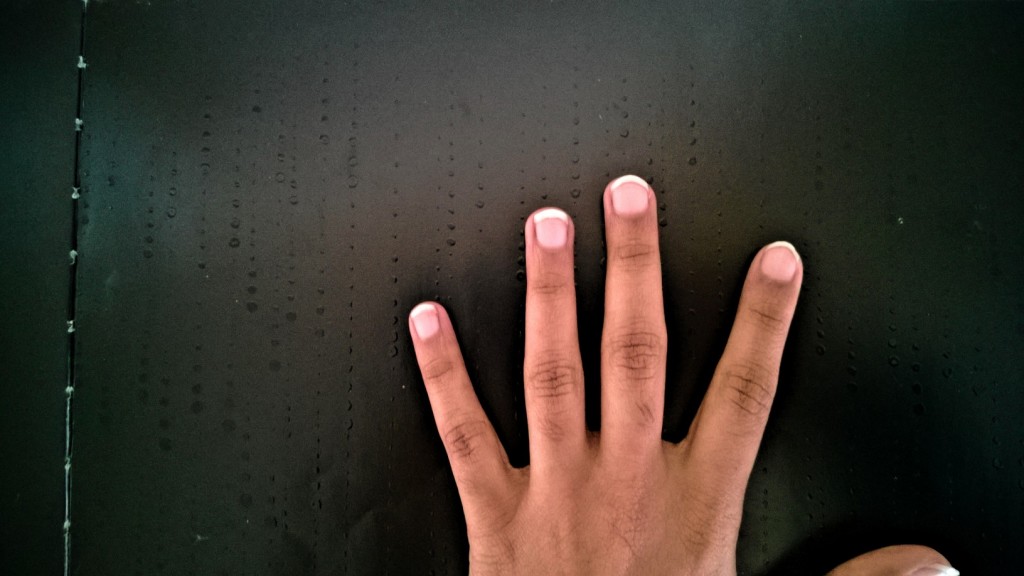You’ll never look at color the same way again
The nature of concept picture books make them formulaic at a very fundamental level. Since these books are usually used to introduce an idea (shapes/colors/numbers), many of them tend to be constructed along similar patterns. Usually it’s over the illustration styles or the examples discussed that they differ. And luckily for us, sometimes, there are inventive exceptions to these rules.
The facing page of the illustration above has the text “But when clouds decide to gather up and the rain pours down, then the sky is white.” Above the printed words, the same sentence is in Braille. This is a spread out of the seemingly paradoxically titled The Black Book of Colors written by Menena Cottin and illustrated by Rosana Faría.
Groundbreaking in many ways, this book was awarded the Bologna Ragazzi New Horizons award back in 2007 for its innovativeness in attempting to give a sighted person the experience of not being able to see. The illustrations throughout the book, similar to Braille, are also embossed on the paper so that when you run your fingers over them you get a tactile sense of the color being described (like in the pic. below.)
At the end of the book, a Braille alphabet is also included for those readers who might be interested in learning it. As you close your eyes and run over the Braille with your fingers you begin to experience reading in an altogether different dimension. And most importantly the text gives you a non-visual way to experience and understand color through imagery that is related to the other senses of touch, sound and taste. Evocatively executed, The Black Book of Colors is an ambitious picture book that will change the way you look at the world.
Menena Cottin is now exploring the picture book app space. Her debut digital work, Double Double, is also a creative piece that is hinged on the different ways a reader can experience a story. In her signature style, it is both daringly simple and full of surprises.
Pomelo Explores Color by Ramona Bādescu and Benjamin Chaud is the second picture book in a series by this talented duo which features a quirky, tiny elephant as its protagonist. Their first was the wildly popular Pomelo Begins to Grow, then followed by Pomelo’s Opposites. Pomelo Explores Color is adorable; I can guarantee that it will delight both adults and children alike. The entire structure and narrative of this book is based on describing colors in unusual, often unexpected ways. It is also an excellent example of how the writing of a picture book can create a unique tone that sets it apart in a sea of other similar books.

Translation copyright © 2012 by Enchanted Lion Books
Originally published in France by Albin Michel Jeunesse © 2011 as Pomelo et les couleurs

Translation copyright © 2012 by Enchanted Lion Books
Originally published in France by Albin Michel Jeunesse © 2011 as Pomelo et les couleurs
This unassuming board book pretty much defines the phrase ‘good things come in small packages.’ Actually, let’s make that great things. It’s a thoughtful book on a topic that you would consider the most pedestrian type of picture book. Small, sparse and packed with elegant restraint, Pomelo Explores Color is anything but quotidian.
Both these books show how just a concept book can be elevated to something so much more meaningful and enjoyable than many others in their genre. Profound and powerful, yet playful and poetic. How’s that for some alliterative picture book description?








